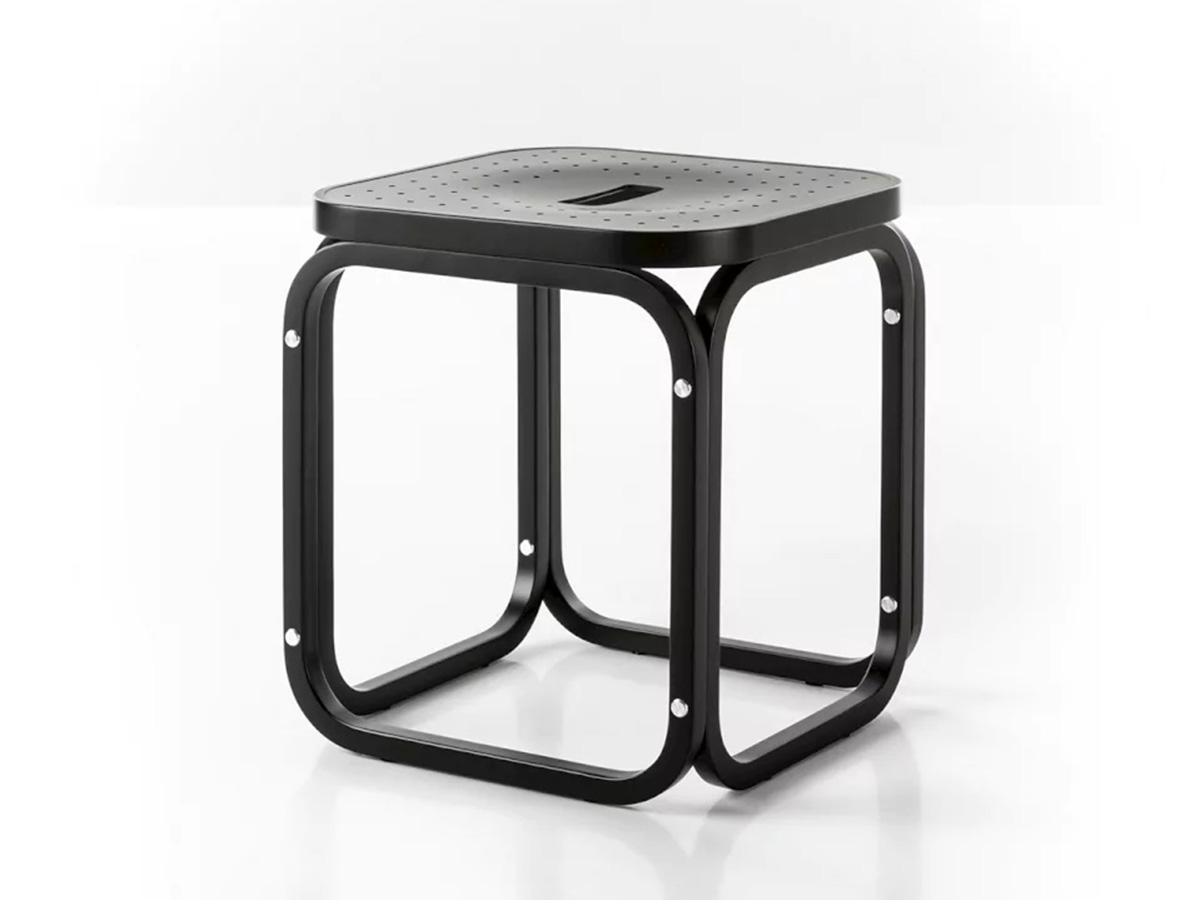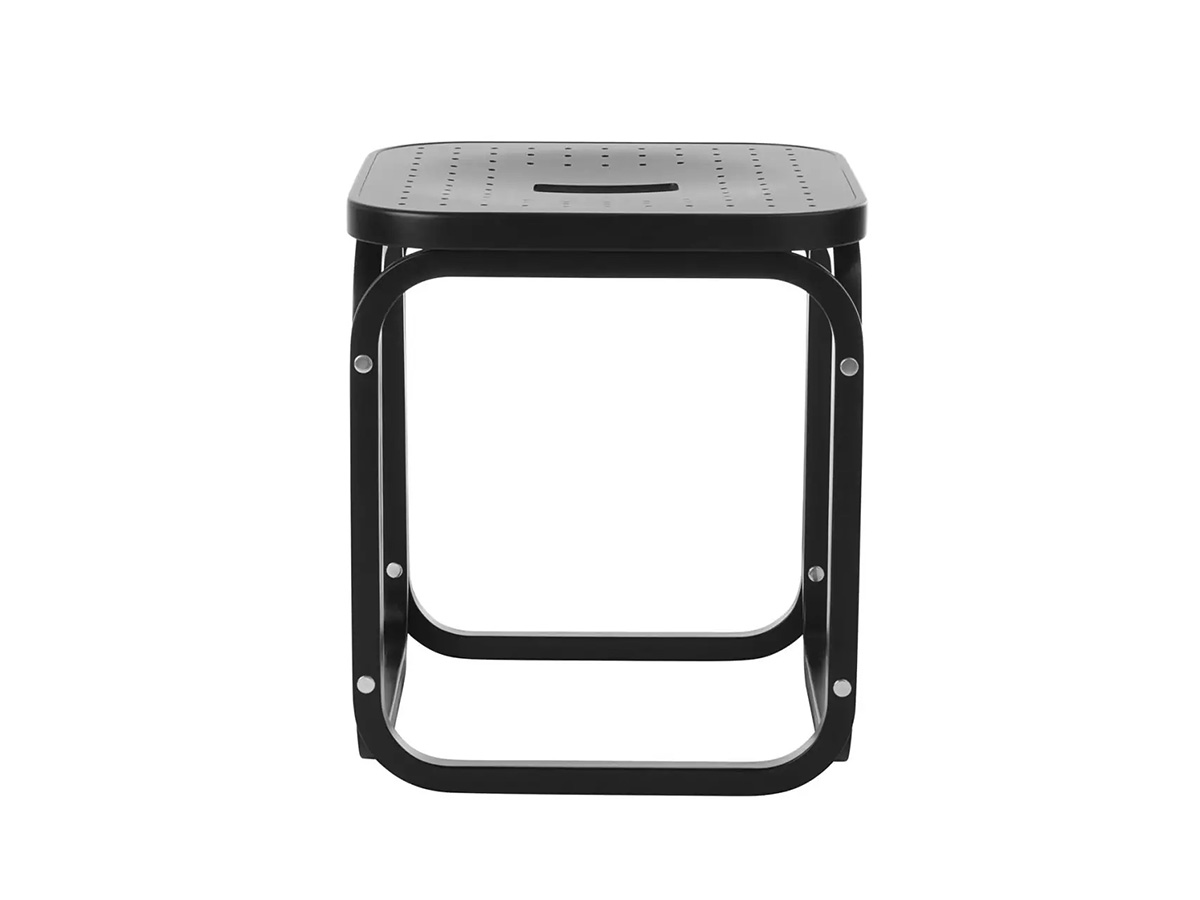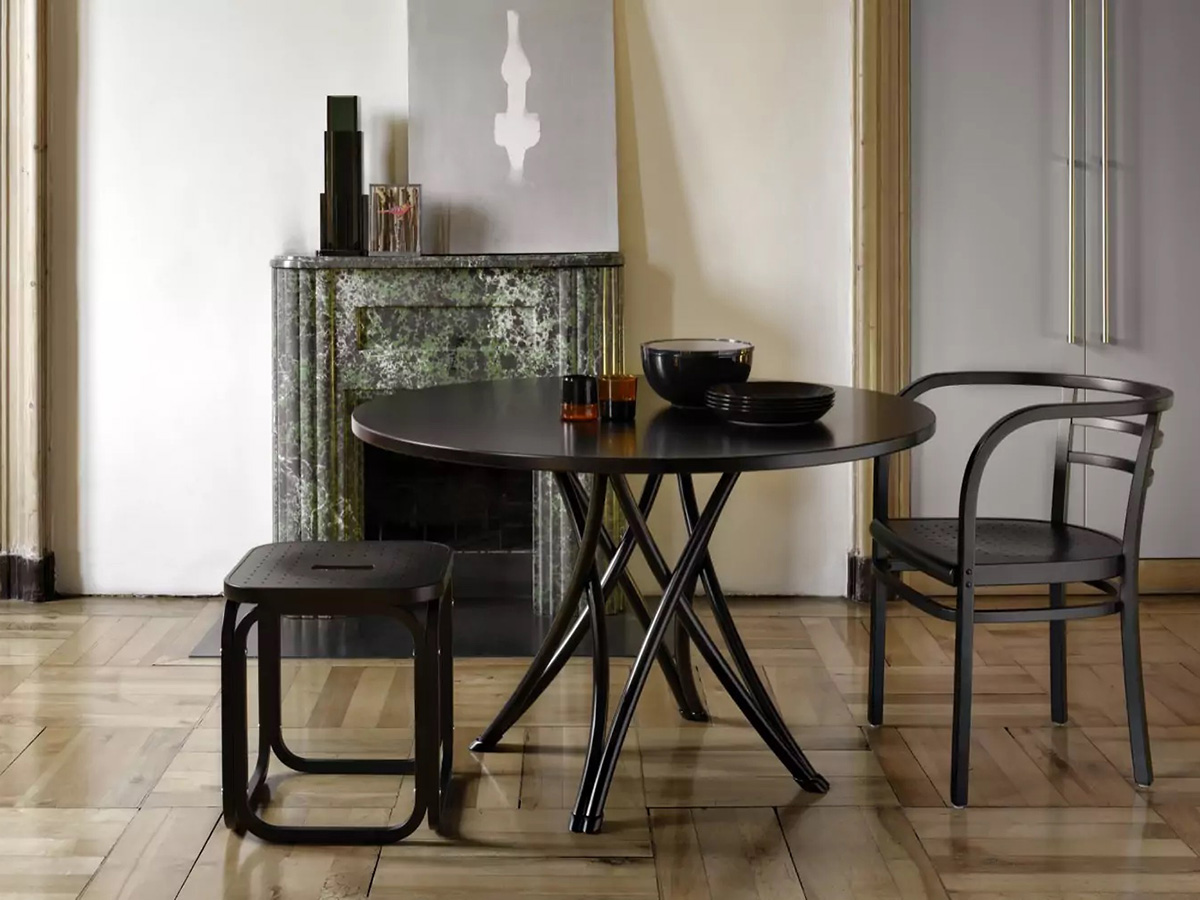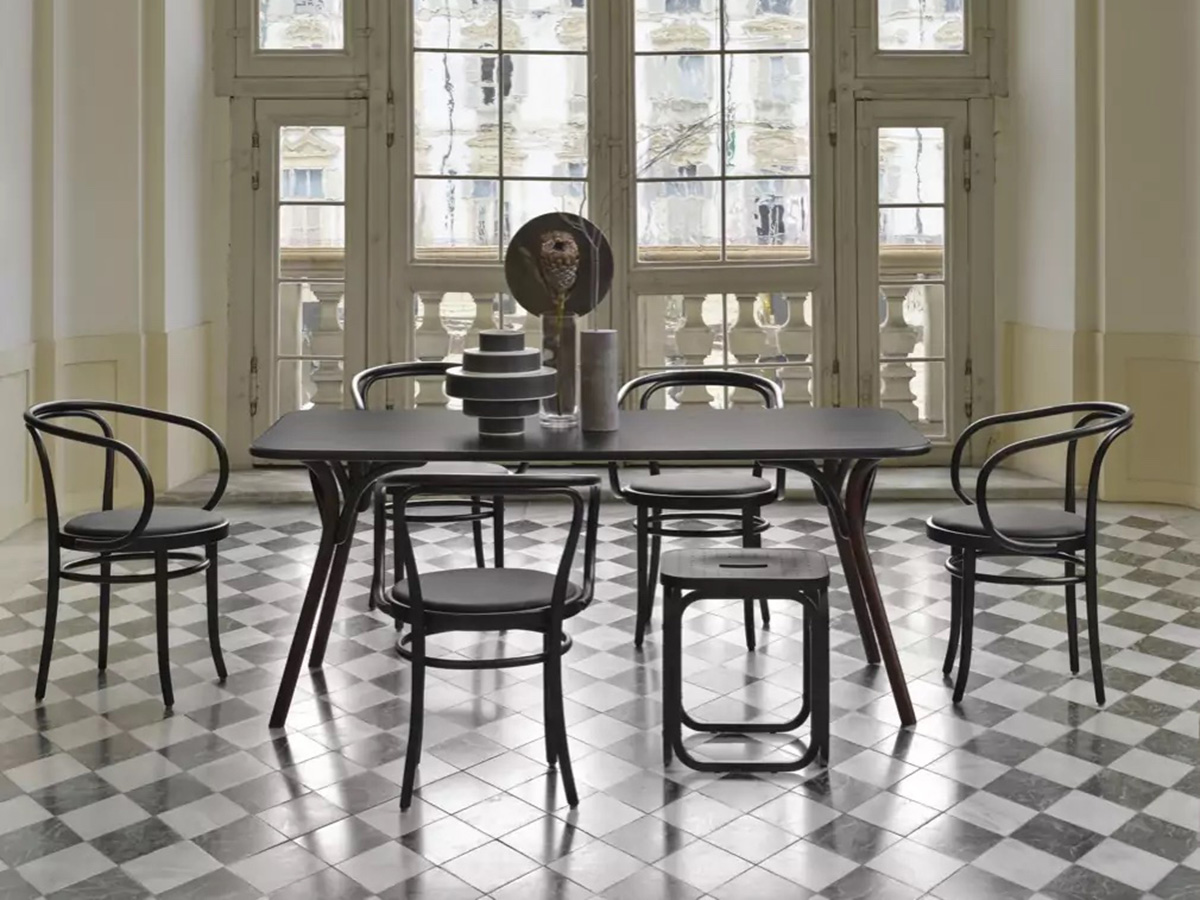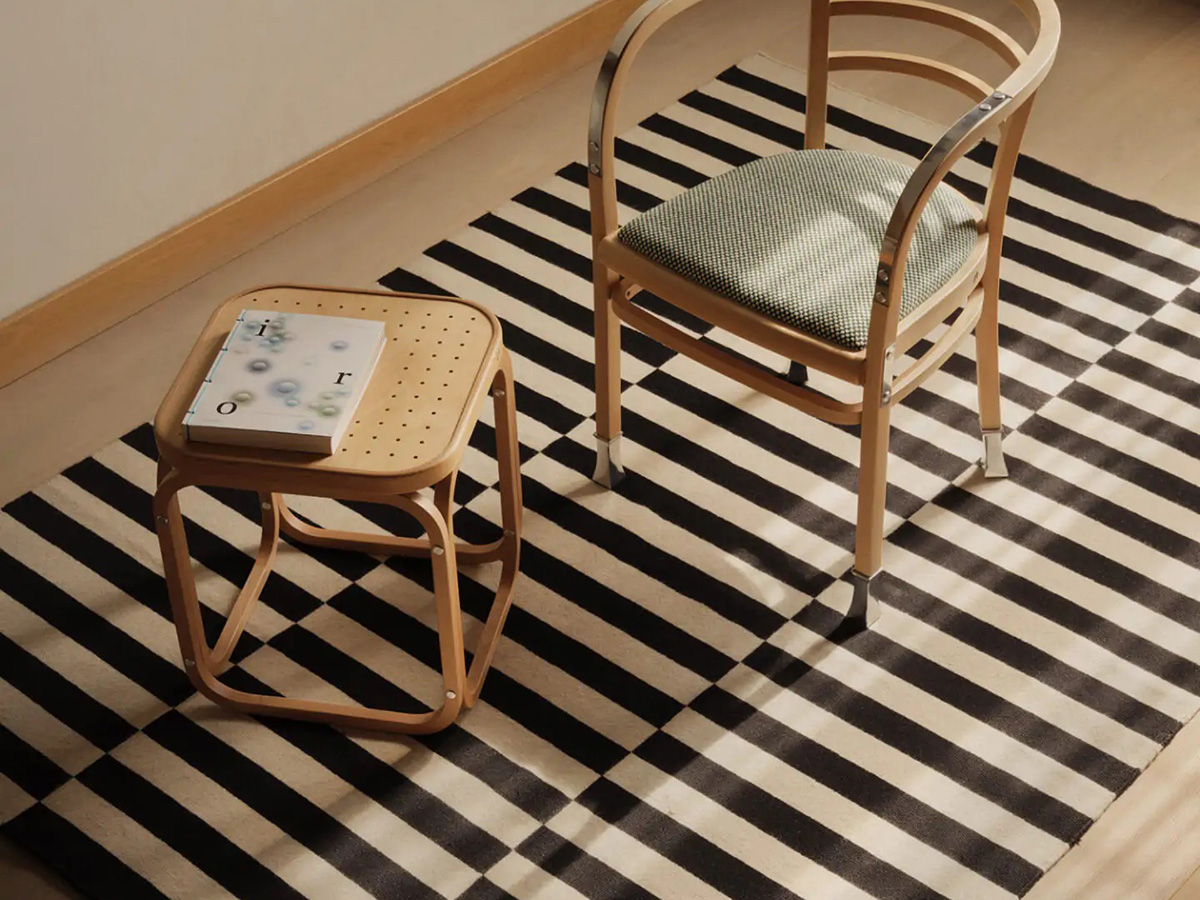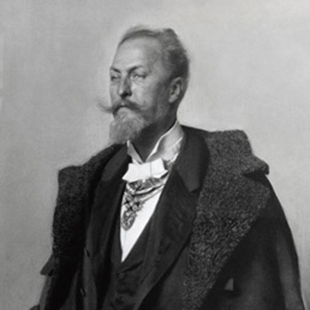Gebruder Thonet Vienna
Postsparkasse Stool
Price starting from € 686.00*
*Price valid for the version with frame in stained beechwood and seat in perforated plywood (cod. SGPSTKLGN).
The Postparkasse series was designed by Otto Wagner for the main administration premises of the Vienna Postal Savings Bank in 1906 as a clear expression of modern Viennese art. The structure is enveloping and ergonomic in curved solid beech with aluminum finishes. The use of wood worked with a square rather than round cross section creates a rigorous and clear profile, ideal for those looking for a clean formal look. The range of proposals includes an armchair and a stool of fine workmanship.
W.42 x D.42 x H.48 cm
Salvioni Design Solutions delivers all around the world. The assembly service is also available by our teams of specialized workers.
Each product is tailor-made for the personal taste and indications of the customer in a customized finish and that is why the production time may vary according to the chosen product.
To discover the full range of services available, visit our delivery page.
Personalize your request
Frame
Select
Select
Select
All design history books begin with the same name: Thonet. In fact, thanks to the research made by the German cabinet maker Michael Thonet on the bending of wood, the industrial production of furniture began. In 1842, Thonet was invited by Chancellor Metternich himself to continue his activity in Vienna, and it was precisely in the capital of the Hapsburg Empire that he founded the Gebrüder Thonet Vienna (GTV) involving his five sons. The company left an indelible mark and the Gebrüder Thonet Vienna chairs went to connote the style of an era, selling millions of pieces all over the world thanks to a cutting-edge distribution network.Read more
Designed by
Otto Wagner
Otto Wagner (1841-1918) was an Austrian architect who played a key role in the transition from a purely classicist architecture, which characterized the entire first phase of his career, to the theoretical renewals which in the early twentieth century will direct the discipline throughout other direction. He achieved great fame in the 1880s with monumental neoclassical buildings inspired by the style of Karl Friedrich Schinkel, then in the following decade he was charged with overseeing the new city plan of Vienna and the extension of the city's transport network, including the its first subway. In 1894 he also began a teaching activity at the Academy of Arts in Vienna, an experience during which he began to let himself be influenced by the new ideas that circulated among his students, reducing the decorative element in his works. In 1897, three of them (Josef Hofmann, Joseph Maria Olbrich and Koloman Moser) gave life to the Secession, an association that contrasted with the pompous official aesthetic advocated by the Viennese Künstlerhaus. Two years later Wagner also joined the new movement, becoming a sort of "noble father" who used his prestige to protect and support his young colleagues. His masterpiece belongs to this period, the Postsparkasse in Vienna (1904-06), inspired by the principle of the Gesamtkunstwerk and entirely furnished with new-concept furnishings, now re-proposed by Gebrüder Thonet Vienna.Read more
